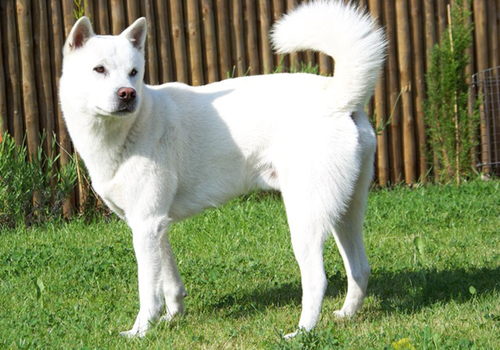Beyond regular weekly grooming, the occasional bath will keep your Kishu clean and looking his best. Grooming can be a wonderful bonding experience for you and your dog.
The strong, fast-growing nails should be trimmed regularly with a nail clipper or grinder to avoid overgrowth, splitting, and cracking. Their ears should be checked regularly to avoid a buildup of wax and debris, which can result in infection. Teeth should be brushed regularly.
Kishus require daily exercise and stimulation, but as a dog that is built to run and hunt, the quality of the activity is more important than the physical exercise.
The Kishu is a very active breed that requires a significant amount of daily exercise. This breed needs at least 30 minutes of vigorous exercise per day and will appreciate having an outdoor, fenced area in which to run and play.
Having a large yard where the dogs can run around is good for daily use, but without the stimulation, daily walks may become boring and yards will just end up a place of contention where your Kishu may become a master escape artist or a brilliant excavator.
Giving your Kishu Ken a nice, daily walk in addition to alternating “adventures” or enriching activities (hiking in a new place, taking them to a new neighborhood to walk around, introducing a novel toy or item or just something high-value they can take time with) will satisfy their needs.
If your Kishu is very active, however, he may do better on an active or working breed formula. Make sure your dog gets plenty of protein in his diet to support lean muscle mass.
Any diet should be appropriate to the dog’s age (puppy, adult, or senior). Some dogs are prone to gettingoverweight, so watch your dog’s calorie consumption and weight level.Treatscan be an important aid in training, but giving too many can cause obesity.
Learn about whichhuman foodsare safe for dogs, and which are not. Check with your vet if you have any concerns about your dog’s weight or diet.Clean, fresh water should be available at all times.
As an ancient breed, the Kishu is generally very healthy and there are no known genetic health problems. Some of the conditions to which the breed may be prone include hypothyroidism, entropion, and food or environmental allergies.
Kishu Ken are intelligent problem solvers. They like to try to resolve their issues and do things independently until they are taught otherwise.
They are as trainable as their owner is willing to discover what motivates them.This can be something as easy and simple as finding a favorite food or it can be a little more obscure, like a particular sock or a toy that can be rewarding enough to work for.
Kishu Ken has worked with people, historically, as boar-hunting dogs, and that intelligence and cooperation can be put toward contemporary sports such as agility, herding, obedience, lure coursing, and much more, depending on individual preferences and ability.












